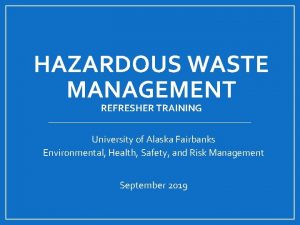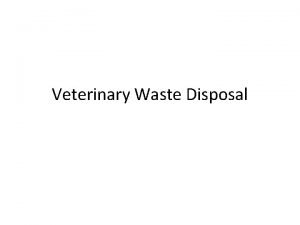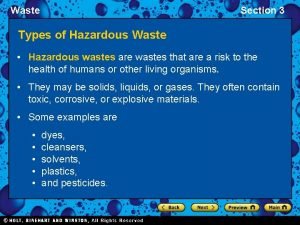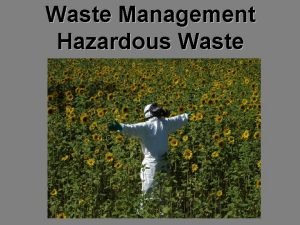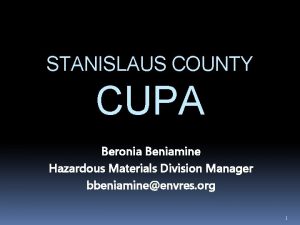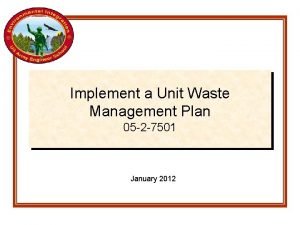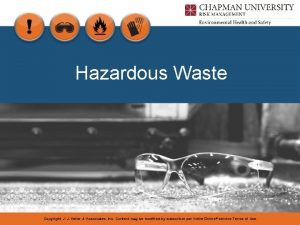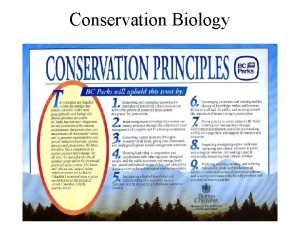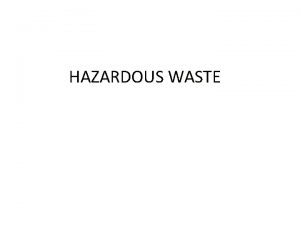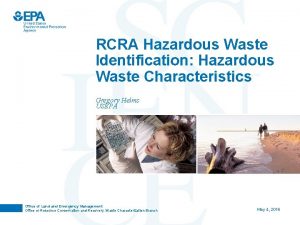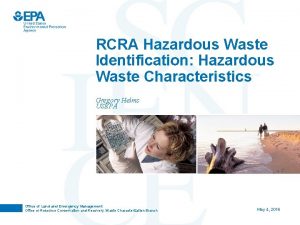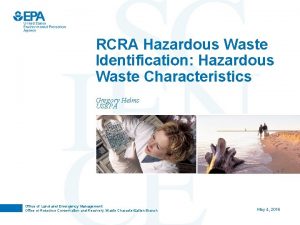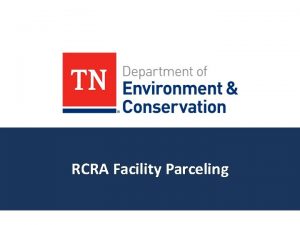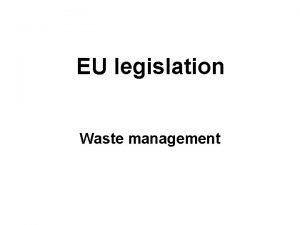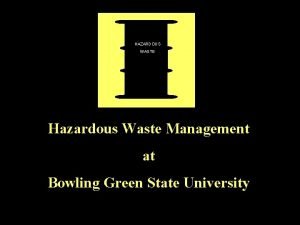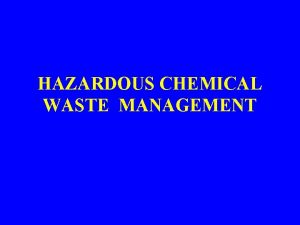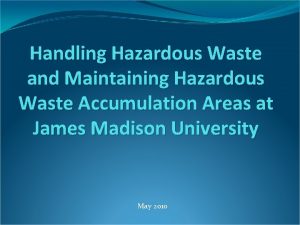Hazardous Waste Management Legislation RCRA Resource Conservation and










- Slides: 10

Hazardous Waste Management Legislation RCRA – Resource Conservation and Recovery Act Regulate management and disposal of wastes currently being produced CERCLA – Comprehensive Environmental, Response, Compensation, and Liability Act (Often called Super-Fund) Deals with clean-up of old or pre-existing hazardous waste problems And clean-up of spills TOSCA – Toxic Substances Control Act Prevention of the creation of hazardous wastes and PCB clean-up

RCRA Mandates “cradle-to-grave” management of Hazardous wastes Every organization that manages hazardous wastes must notify EPA and receive an Identification number Hazardous wastes are monitored by the Hazardous Waste Manifest System

Uniform Hazardous Waste Manifest Generators create Uniform Hazardous Waste manifest document Manifest must Accompany waste At all times, from Generation to disposal

What Constitutes a Generator? Anyone classified as a small or large quantity generator must start the manifest document So anyone generating more than 100 kg/month Has to comply with the Uniform Hazardous Waste Manifest process Manifests must also be created if > 10 kg/month of acutely toxic wastes are generated Generators ID number must accompany the waste at all times

Transporter Storage Treatment Disposal TSD


CERCLA Establishes responsibility for waste clean-up Generators ultimately responsible Liability is “strict” according to CERCLA Don’t have to prove an action was irresponsible to estabish responsibility Liability is “Joint and Several” A generator may be held responsible more than “his fair share” Deep pocket Liability is retroactive

Results More “on-site” disposal Why?

Clean-up of Old Sites Evaluation Hazard Ranking System (HRS) 1 Potential health effects 2 Potential for fammability & explosion 3 Potential for direct contact with waste HRS score Based on HRS score sites are prioritized National Priority List (NPL) Ø 2200 sites on NPL Ø~40 have been cleaned up ØIn addition, 110 DOE sites Ø 17, 000 DOD sites

Steps to Clean-up Sites on NPL 1) RI/FS (Remedial Investigation/Feasibility Study) Define Problem Investigate alternative solutions Determine a recommended solution 2) Public Meetings 3) ROD (record of decision) Choose alternative solution
 Rcra hazardous waste refresher
Rcra hazardous waste refresher Solid and hazardous waste
Solid and hazardous waste Veterinary waste disposal
Veterinary waste disposal Section 3 hazardous waste answers
Section 3 hazardous waste answers Dr neha agrawal
Dr neha agrawal E-waste definition apes
E-waste definition apes Sample of hazardous waste
Sample of hazardous waste Stanislaus county hazardous waste
Stanislaus county hazardous waste Segregation of hazardous waste
Segregation of hazardous waste Keller hazardous waste disposal
Keller hazardous waste disposal Resource conservation ethic definition
Resource conservation ethic definition
